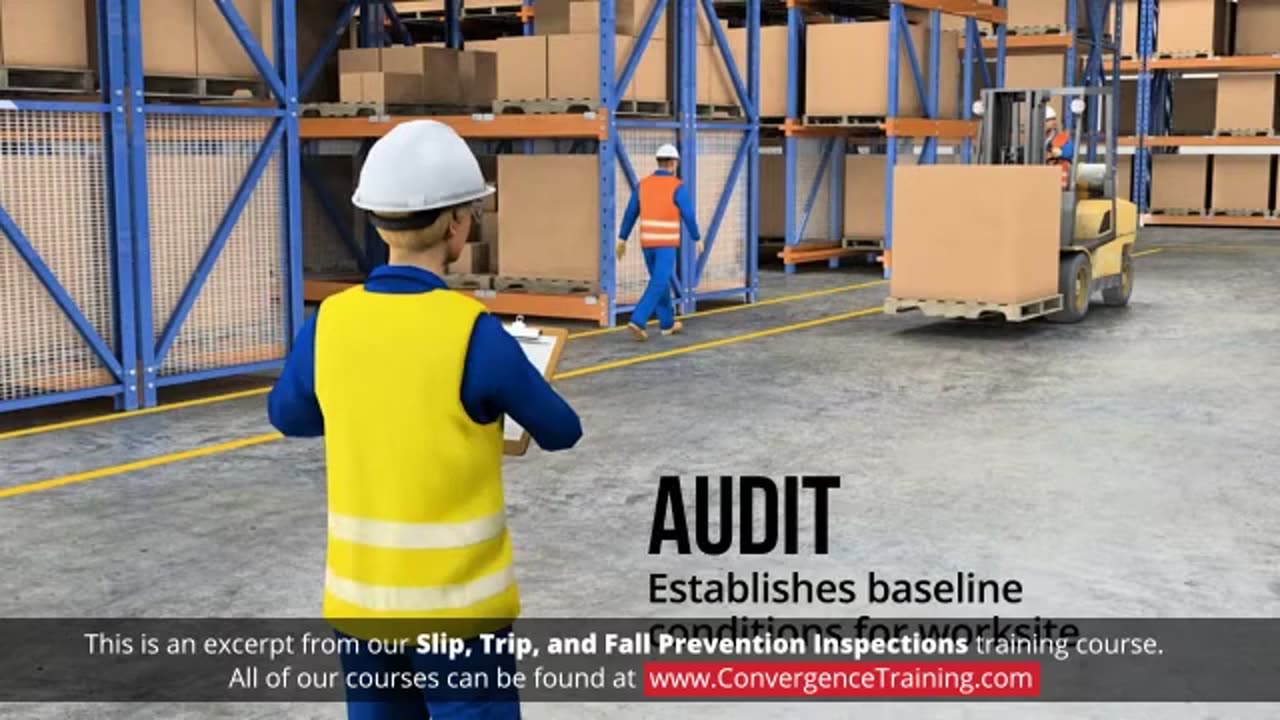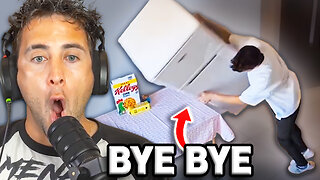Premium Only Content

Slip, Trip, and Fall Prevention Inspections
Slip, trip, and fall prevention inspections are critical for maintaining safety in workplaces, public spaces, or even private properties. They focus on identifying hazards and implementing measures to reduce the risk of accidents. Here's an overview of the inspection process and key components:
---
### **Key Areas to Inspect**
1. **Flooring and Walking Surfaces**
- Look for cracks, uneven surfaces, loose tiles, or worn carpets.
- Ensure anti-slip mats are present in wet or oily areas.
- Verify the proper installation of slip-resistant flooring in high-risk areas.
2. **Housekeeping Practices**
- Inspect for clutter, such as tools, cords, or debris, in walkways.
- Ensure all spills or leaks are promptly cleaned and signage is in place.
3. **Lighting**
- Ensure adequate lighting in stairwells, walkways, and other high-traffic areas.
- Replace burnt-out bulbs and repair broken fixtures.
4. **Staircases and Handrails**
- Check for secure, continuous handrails and ensure stair edges are clearly marked.
- Inspect for loose steps, carpets, or handrail damage.
5. **Wet Areas**
- Inspect bathrooms, kitchens, and entryways for water or condensation.
- Ensure floor drains are functional, and wet floor signs are available.
6. **Outdoor Areas**
- Examine sidewalks, parking lots, and entryways for cracks, potholes, or ice buildup.
- Confirm that outdoor lighting and drainage systems are effective.
7. **Ladders and Elevated Workspaces**
- Verify ladders and scaffolding are in good condition and securely placed.
- Ensure workers are trained on proper usage and follow safety protocols.
---
### **Inspection Checklist Example**
- Are floors dry, clean, and free from obstructions?
- Are wet floor signs available and in use when needed?
- Is lighting adequate in all areas?
- Are steps, stairs, and handrails in good condition?
- Are cords and cables properly secured and not crossing walkways?
- Are entrances and exits free of tripping hazards?
---
### **Preventive Measures**
1. **Policies and Training**
- Conduct regular training for employees on identifying and mitigating slip, trip, and fall hazards.
- Create a safety policy for reporting and addressing hazards.
2. **Signage and Barriers**
- Use clear, visible signs to warn of temporary hazards (e.g., wet floors, maintenance work).
- Install barriers or guards around permanent hazards.
3. **Routine Inspections and Maintenance**
- Schedule regular inspections to proactively identify hazards.
- Address maintenance issues immediately to prevent accidents.
4. **Equipment and Supplies**
- Provide slip-resistant mats, footwear, and cleaning equipment.
- Ensure ladders and other tools meet safety standards.
---
Would you like help designing a detailed inspection form or checklist?
-
 6:43
6:43
HSESafetyInformation
7 months agoLahori Chanay Recipe - Lahori Cholay Recipe - Chana Chana Masala
57 -
 LIVE
LIVE
VapinGamers
57 minutes agoTools of the Trade - Lights, Camera, Go Live with Joker - !rumbot !music
47 watching -
 14:38
14:38
Nikko Ortiz
19 hours agoADHD vs Autism
62.2K40 -
 LIVE
LIVE
TonYGaMinG
1 hour ago🟢 INDUSTRIA 2 PLAYTEST / ACTIVE MATTER LATER
35 watching -
 LIVE
LIVE
FoeDubb
1 hour ago🏰KINGDOM MENU: 🎮SHORT SATURDAY SESH ON DECK DILLY DILLY!!
54 watching -
 LIVE
LIVE
GlizzyPrinceChristian
1 hour agoCOD SATURDAYS DIGGY DIGGY DIGGY| We Testing Out This Beta
30 watching -
 LIVE
LIVE
MrR4ger
3 hours agoSCARETOBER DAY 4 - AMNESIA: THE BUNKER - ACTIVE MATTER WITH GUMO AN TONY #PARTNERED STREAM
19 watching -
 LIVE
LIVE
FyrBorne
14 hours ago🔴Warzone/Black Ops 7 M&K Sniping: From the Zone to Zombs
224 watching -
 LIVE
LIVE
blackfox87
4 hours ago🟢 SUBATHON DAY 3 | Premium Creator | #DisabledVeteran
73 watching -
 LIVE
LIVE
EXPBLESS
4 hours agoArena Breakout (This Game Is Hard But Fun) How Much Can We Make Today? #RumbleGaming
117 watching
